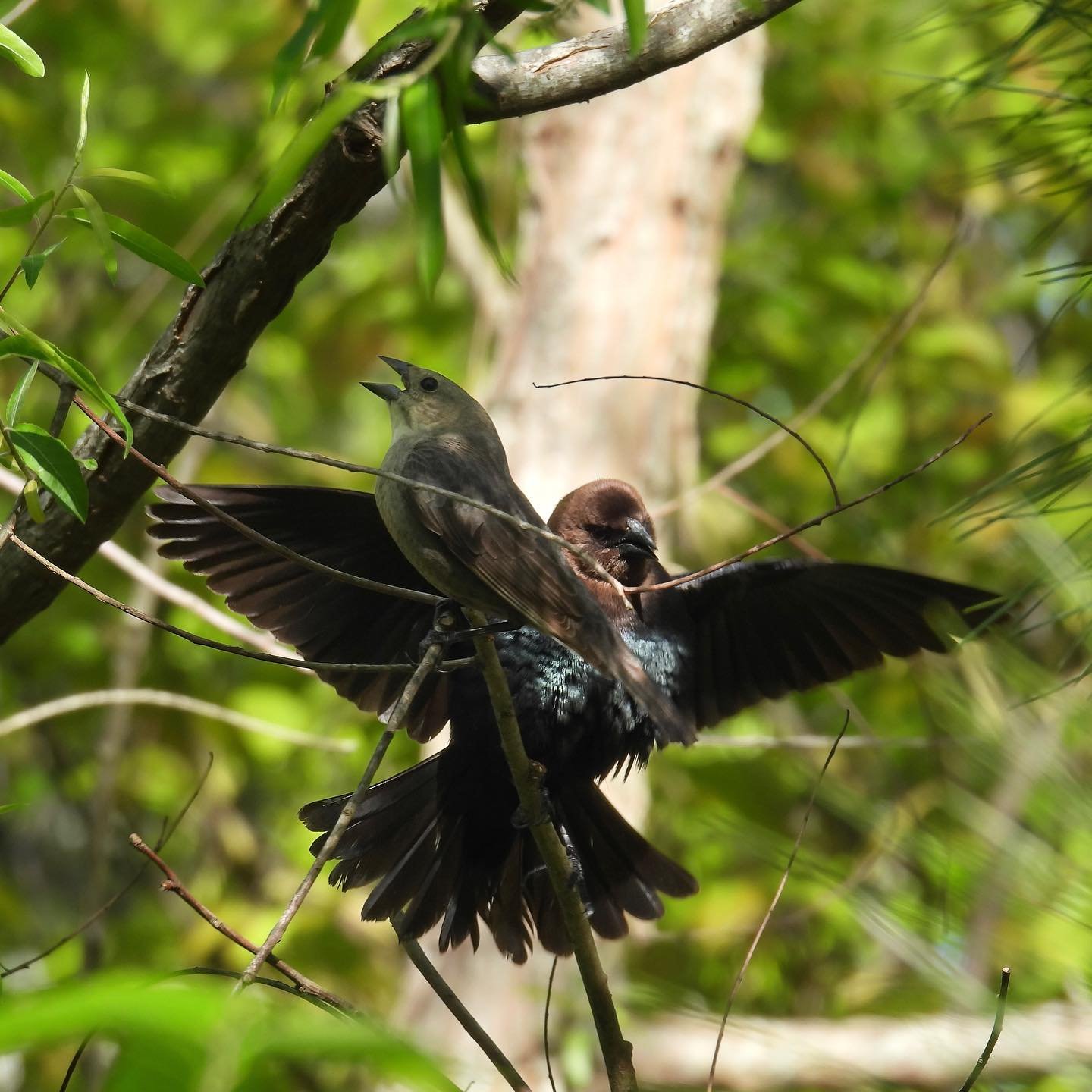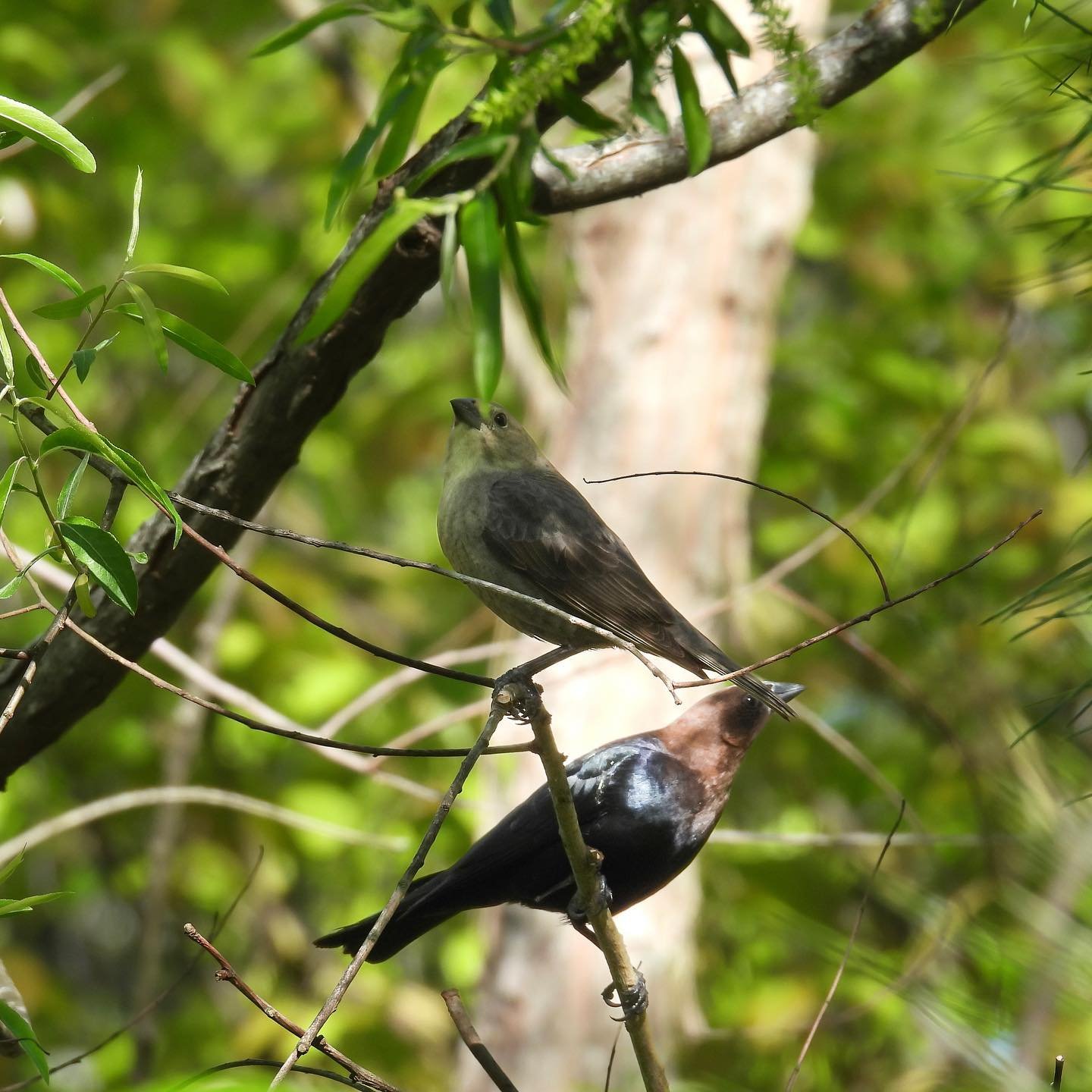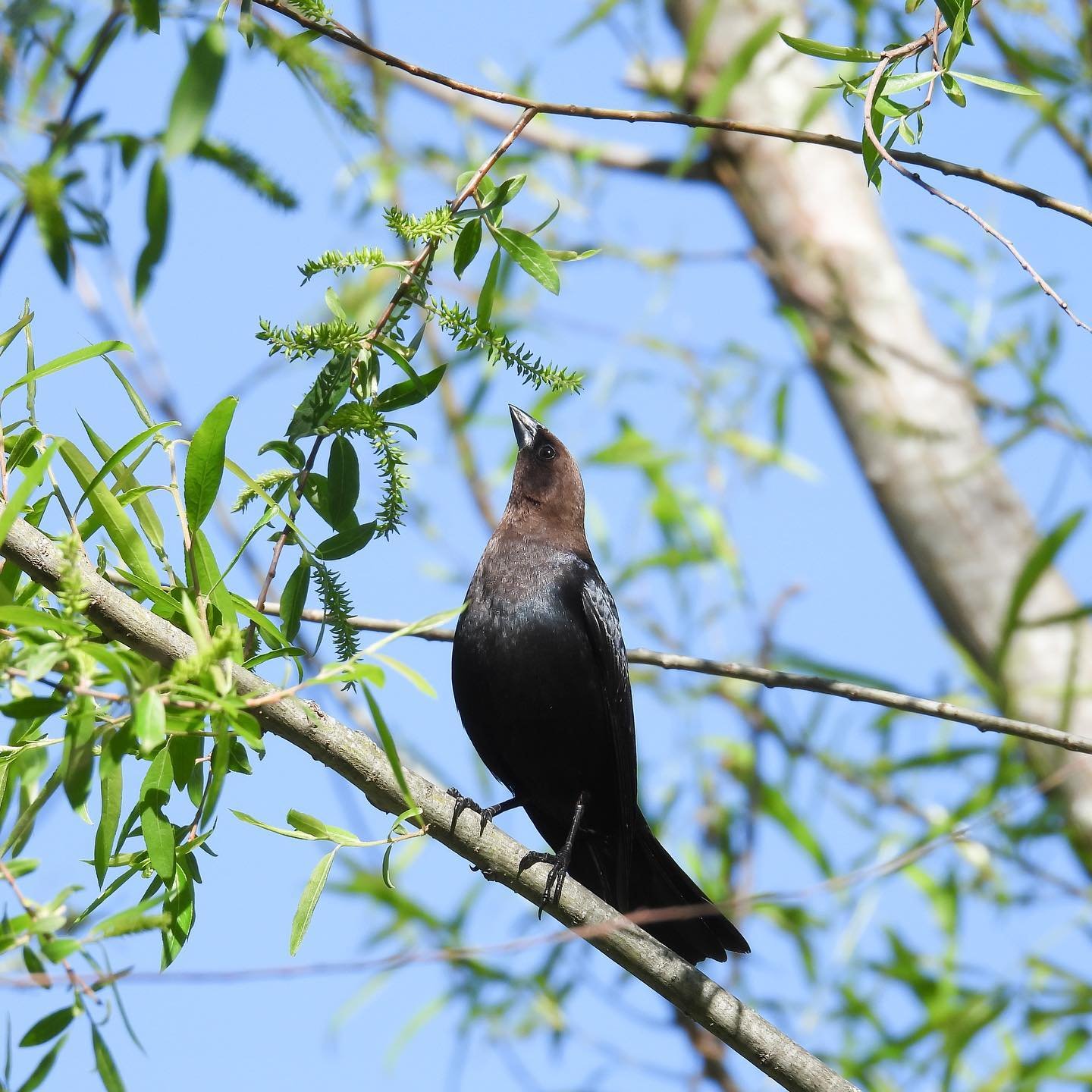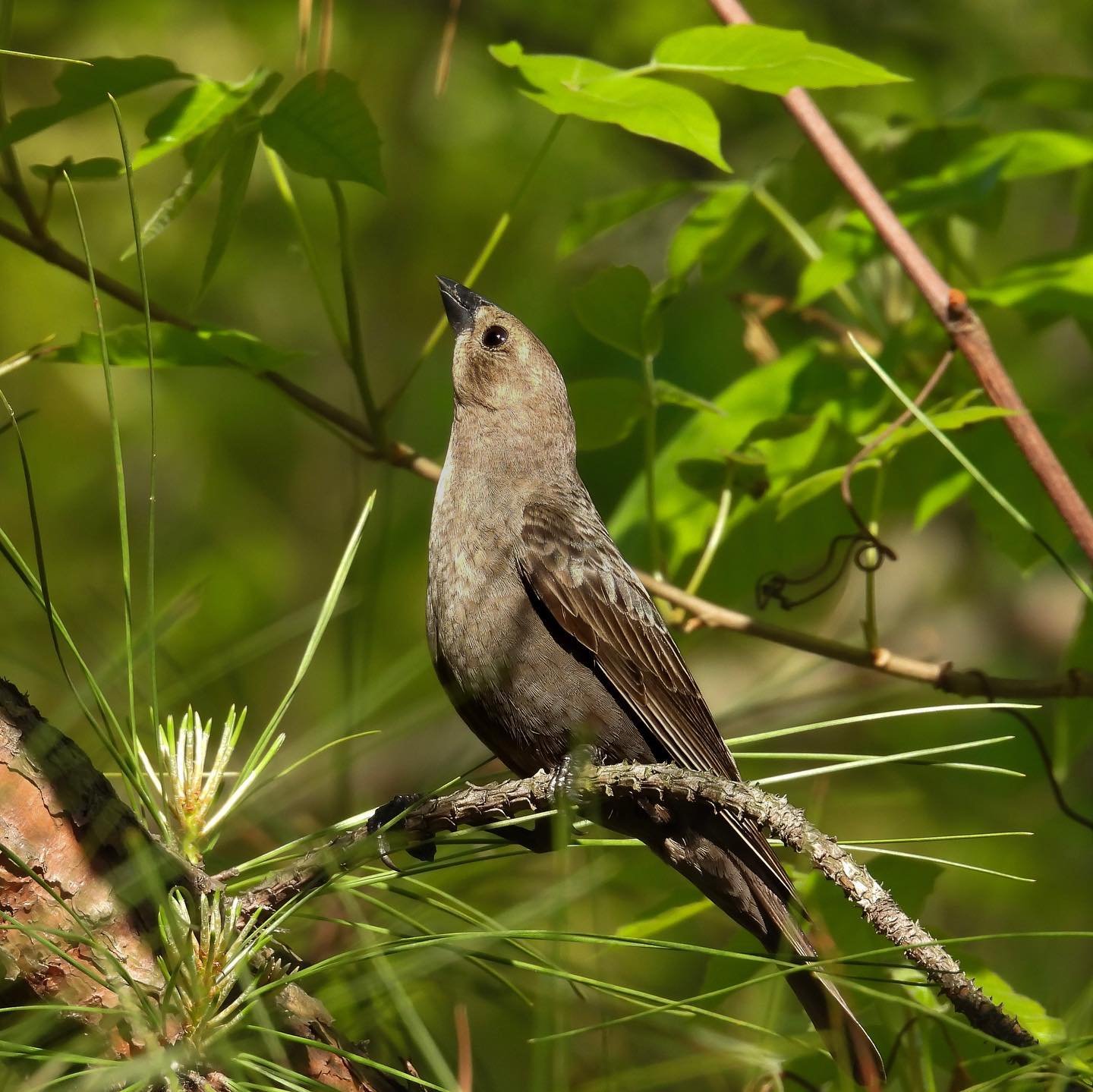The brown-headed cowbird (Molothrus ater) is a much maligned bird. A brood parasite, the brown-headed cowbird female lays her eggs in the nests of other species, leaving the other birds to foster the young cowbirds, sometimes at the detriment of the foster parents’ own offspring.
Watching cowbirds during breeding season begins with following the sounds of chitter chatter. The pale brown female chooses between the competing males. Males have glossy black bodies and brown heads, and they are strikingly beautiful as they stand with their heads held up high with tilted bill. Fluffing up their upper feathers during courtship displays, the males will follow the female around, hopping to wherever she goes, lifting and spreading their wings and tails, bowing and dipping their heads, chattering all the while.
The evolutionary history of this species is fascinating, and in discovering reasons for its breeding strategy, it’s possible to understand and appreciate the brown-headed cowbird. Brown-headed cowbirds were once a bird of open plains, prairies, grasslands, thickets, and forest edges, not a bird of the forest. Foraging on insects and seeds kicked up by grazing animals like bison and cattle, they found their niche. As the grazing herds moved, the flocks went with them. Stopping to nest would not work, but finding foster nests afforded the birds to move with the herds. Expanding human development, agricultural pastures, fields, residential areas, and the resulting forest fragmentation has given more habitat to the cowbirds to expand their range.





